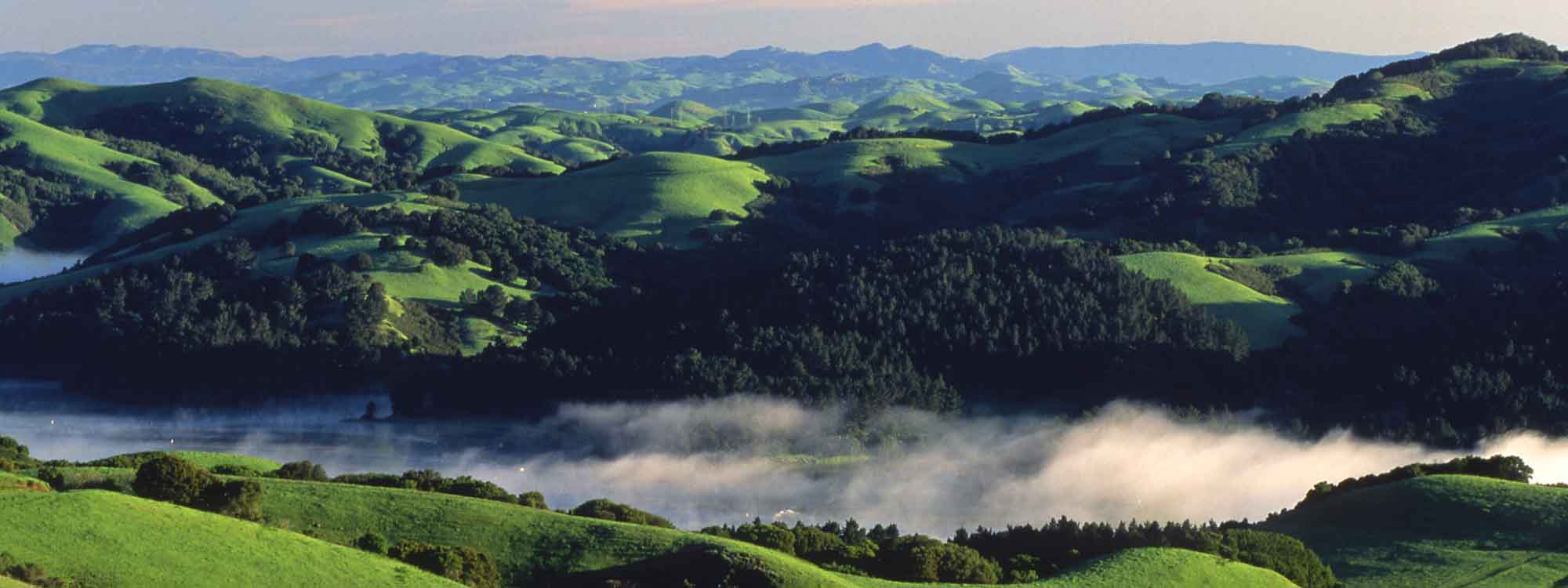Those of us who live in the Bay Area are lucky to have access to a 3.6 million-acre greenbelt that provides us with clean air and water, productive farmlands, and nearby natural areas to experience the power of nature. Greenbelt Alliance works to protect these lands through land-use policies. But exactly what is a greenbelt?
“Greenbelt” is a general term that refers to natural, undeveloped, and/or agricultural lands that surround urban areas. These lands may include open spaces, parks, farms and ranches, wildlands, or a combination thereof—as designated by cities, counties, special districts, and other jurisdictions.
Greenbelts encompass many different types and scales of landscapes such as wildlife corridors, streams, wetlands, and recreational parks as well as grazing lands, orchards, and vineyards.
Preserving Greenbelts Is More Critical Than Ever
With climate change and wildfire threats accelerating, protecting and enhancing greenbelts is more critical than ever to people and the environment. These are the places that act as natural buffers during wildfires, provide essential groundwater during drought, and offer refuge when we must distance to keep our loved ones safe. When it comes to wildfire, we’ve seen how greenbelts around towns have given firefighters room to better defend homes and lives. During the pandemic, we experienced how access to the outdoors was essential to mental and physical health. Preserving greenbelts prevents inefficient, unhealthy sprawl development—which increases driving and greenhouse gas emissions—from spreading into valuable natural and agricultural lands. Instead, we advocate for climate-smart communities near services, jobs, and transit.
Greenbelts are Essential to the Economy
As nature-based, green “infrastructure,” greenbelt lands like wetlands, streams, meadows, forests, and others provide ecosystem services like water quality, air quality management, flood control, and carbon sequestration. The Santa Clara Valley Open Space Authority estimated that the value of ecosystem services provided by the county’s natural landscapes ranges from $1.6 to $3.9 billion annually. Similar results were found in Sonoma and Santa Cruz Counties.
The multiple benefits of greenbelts taken together make the Bay Area’s lands and people more resilient to climate change.
What Greenbelt Alliance Is Doing to Preserve Greenbelts
Over the past five years alone, we’ve protected more than 70,000 acres of open spaces that provide critical resources for relieving climate impacts. In Sonoma County, we pushed forward the approval of the Vital Lands Initiative. We also won new greenbelt designations in Napa, protected precious open space in Contra Costa County, and moved Coyote Valley steadily toward permanent protection.
“The San Francisco Bay Area’s natural lands provide fresh water, wildlife habitat, and protection against the effects of climate change. Greenbelt Alliance’s work on forward-thinking and creative policies to save these places is critical to the future of the Bay Area.”
Terry Tamminen, CEO — Leonardo DiCaprio Foundation
Get to Know Your Local Greenbelt
- Explore your local greenbelt with us on an outing! Our outings program offers free guided nature hikes, urban tours, and bike rides throughout the Bay Area. Right now, we’re offering virtual outings. Check them out and RSVP now!
- We need you to be a champion for the Bay Area’s greenbelts too. You can take action today to lend your support to our land conservation and smart growth work.
Get Updates
Get monthly updates on events, actions, and news from Greenbelt Alliance.




